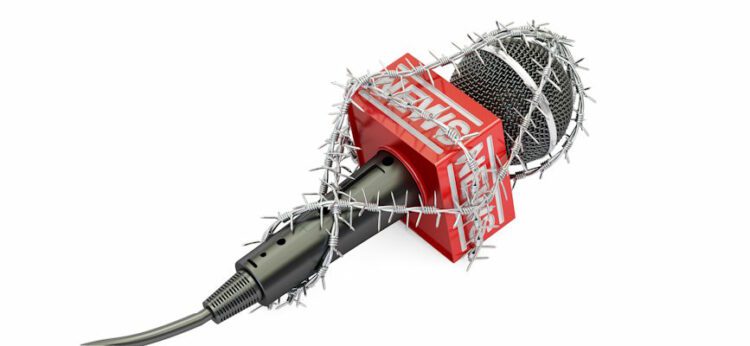Government control of media outlets around the world is on the rise, according to the State Media Monitor 2024 report. The portion of editorially independent media among all state-controlled and public media around the globe dropped from 20% in 2021 to 16% in 2024. According to the data, only 96 of the state and public media outlets included in the study can be defined as editorially autonomous – decreasing from 93 the previous year. The decline is especially significant considering the 2024 analysis included 13 countries added since the prior year’s analysis: Cape Verde, Mali, Sierra Leone, Fiji, Samoa, Solomon Islands, Bahamas, Barbados, Dominica, Saint Kitts and Nevis, Andorra, Kyrgyzstan, and Maldives.
Over 84% of the 601 state-administered media entities in 107 countries studied by State Media Monitor showed a lack of editorial independence. This represents a 1% increase from the previous year, highlighting the persistence of state control over media.
State Media Monitor defines state-controlled media as media outlets “that are wholly owned and operated by the government, which has a big say in their editorial agenda.” On the opposite end of the scale, Independent public media are defined as public service media whose funding and governing mechanisms are designed to insulate them from government interference. In between those extremes are media outlets operating under various levels of government influence, ranging from independent state funded or managed media to captured public or private media outlets.
The analysis indicates many countries are competing for control of the global news ecosystem. The US, the UK, France, China, Russia, and Turkey, are expanding media empires beyond their own borders, vying for international news dominance. Some countries such as China are funding or otherwise supporting news media outlets beyond their borders, making their overall influence difficult to trace and measure.
State-controlled media grows
About 65% of monitored outlets fall under the state-controlled model, where the government directly influences editorial agendas.
In 2024, 31 outlets in Europe operate under complete state control, an increase from 24 in the prior year.
Independent media declines
The percentage of privately owned media outlets captured by the government increased in 2024 for Europe (19%) and Middle East and North Africa (14%).
Public broadcasting in Slovakia, Thailand, South Korea, and several regions in Spain have lost editorial independence.
Political influence
Right-wing political groups in Europe, including those in Austria and the UK, pose ongoing threats to independent media. Meanwhile, media outlets in countries such as Thailand and South Korea operate under significant government censorship.
State-run media in authoritarian regimes such as those in China and Russia are extending operations internationally, significantly influencing global narratives.
Elections were held in more than 50 nations in 2024, heating up competition for control of the political narrative. State Media Monitor reports that less than a quarter of countries which held elections in 2024 have independent state and public media with editorial freedom, substantially risking the integrity of election processes. Several global conflicts and wars intensified government involvement in media and fueled vying propaganda narratives. Private businesses and political actors also compete for media sway.
Troublingly, public service media is declining around the global. Europe, which typically boasts a plethora of independent outlets, is facing growing pressure from political parties aiming to undermine public service media. European state-controlled media outlets are on the rise, with private media outlets in Hungary, Serbia, and Turkey falling under significant government control. Meanwhile, no purely independent public media outlets were identified in Eurasia, sub-Saharan Africa, Latin America, the Middle East and North Africa (MENA), or Oceania.
The percentage of media outlets under absolute government control compared to the total number of state and public media outlets overall in the region were reported as follows.
Europe – 26%, an increase from 21% in 2023
Eurasia – 83%, an increase from 80% in 2023
Sub-Sahara Africa – 86%, a decrease from 87% in 2023
Middle East and North Africa – 62%, an increase from 60% in 2023
Asia – 74% – a decrease from 75% in 2023
Latin America and the Caribbean – 77%, the same as 2023
North American held steady at 0%, the same as 2023.
There is no getting around the dire consequences posed by government domination of media. The increase in government control indicated in the State Media Monitor report jeopardizes journalistic integrity, the objectivity of news reporting, and diversity in the media landscape. An increase in state-controlled media elevates dangerous propaganda throughout the world.
However, there are a few bright spots. The newly elected government in Poland released publisher Polska Press from state control. The Dominican Republic’s Corporación State de Radio y Televisión (CERTV) has also demonstrated significant improvement in independent editorial coverage over the past year. The Labour Party victory in the UK bodes well for the BBC. These changes suggest that shifts in political leadership can positively impact media independence.
It remains critical that independent media outlets help raise awareness of the need to protect news and information from government control. Media organizations can help advocate for reforms and protections for independent journalism. Safeguarding a diverse information landscape that fosters robust democratic discourse should be a priority for news organizations and a concerned public.
Source link : http://www.bing.com/news/apiclick.aspx?ref=FexRss&aid=&tid=671791a3ec714eb1bf817de5e3f6eeef&url=https%3A%2F%2Fdigitalcontentnext.org%2Fblog%2F2024%2F10%2F22%2Fgovernment-control-of-media-on-the-rise-globally%2F&c=3512739748736534828&mkt=en-us
Author :
Publish date : 2024-10-22 00:50:00
Copyright for syndicated content belongs to the linked Source.
